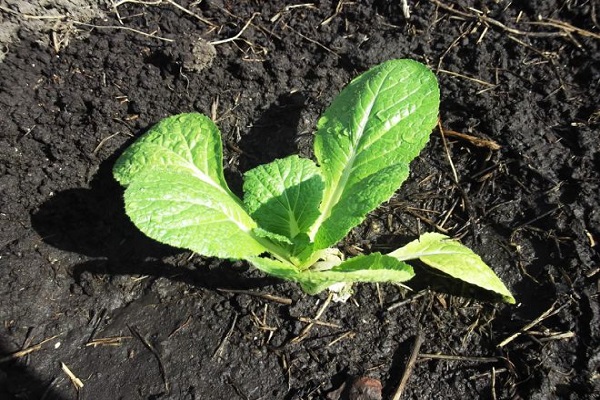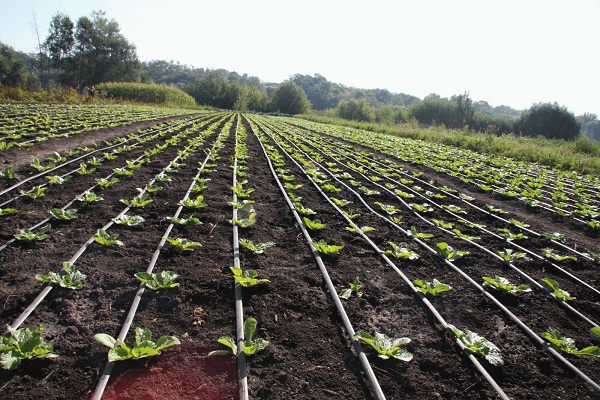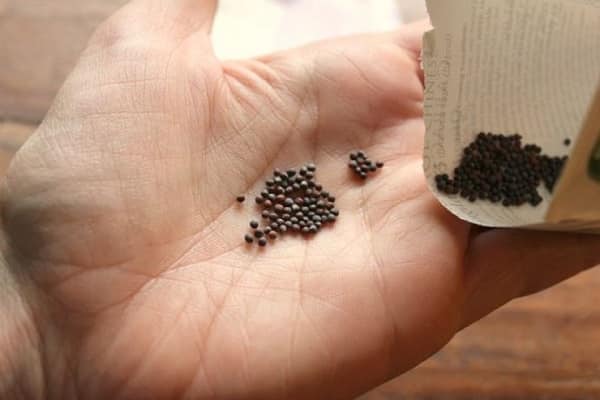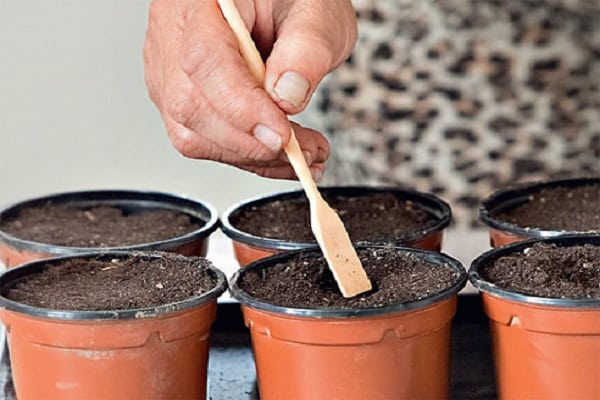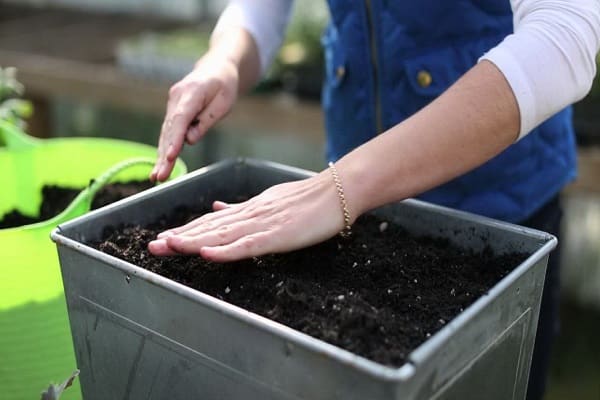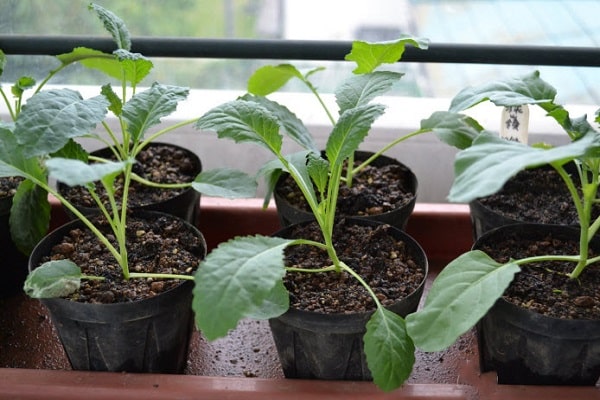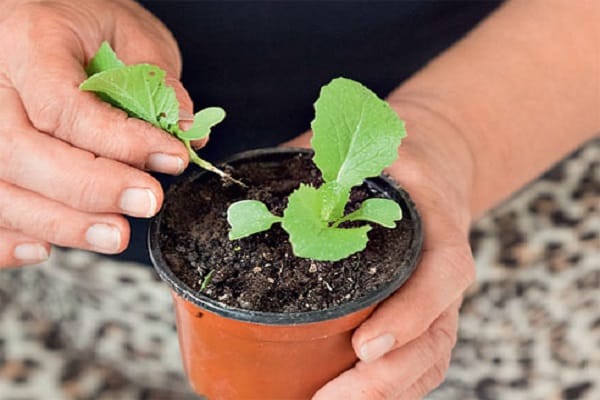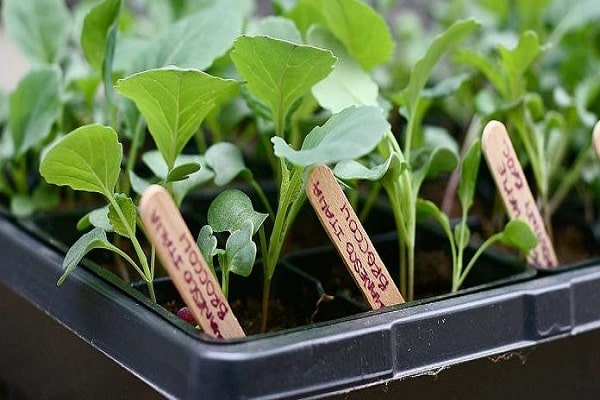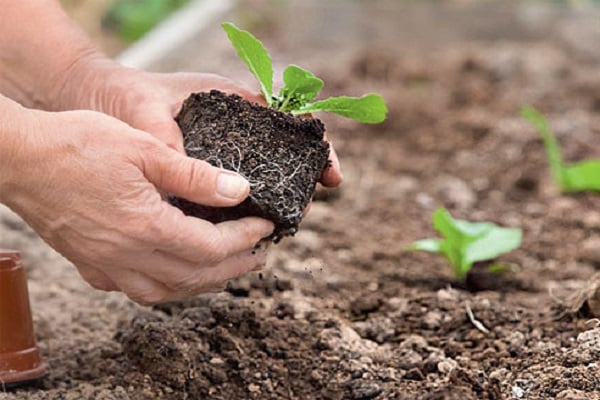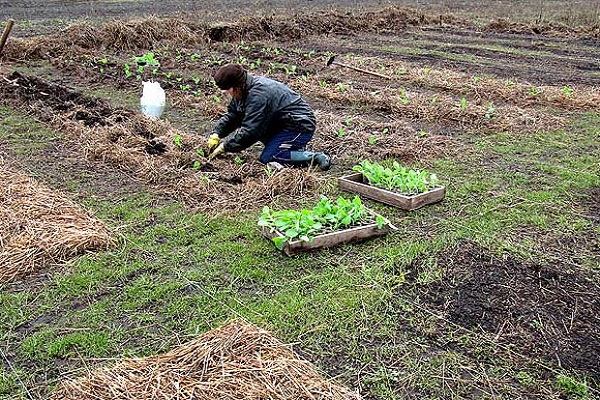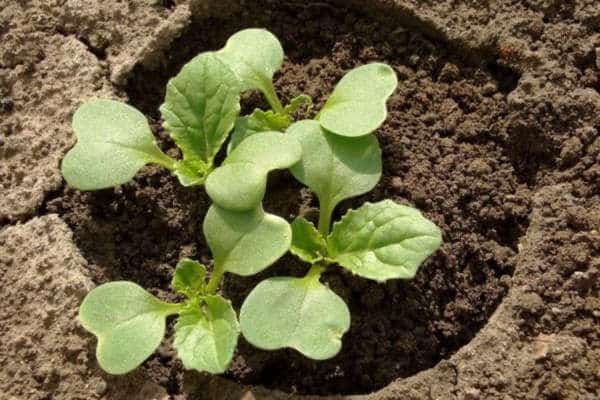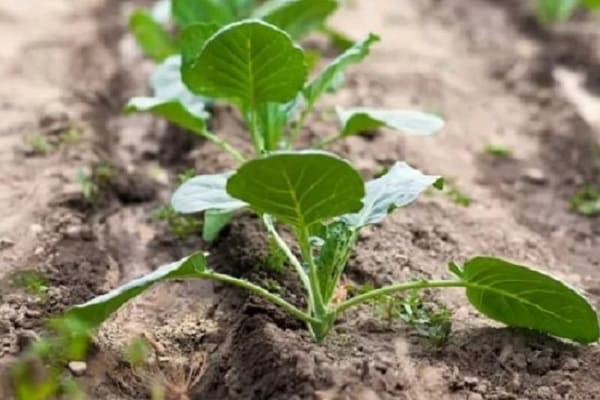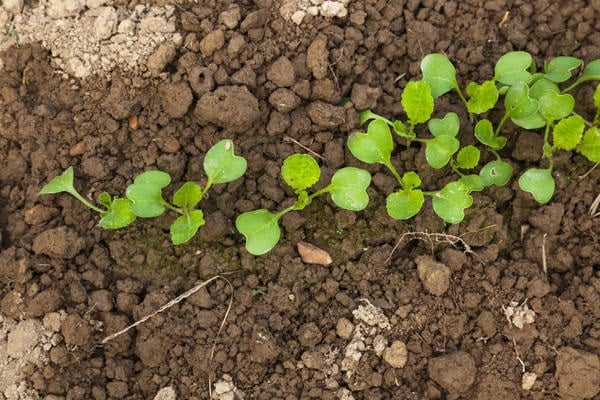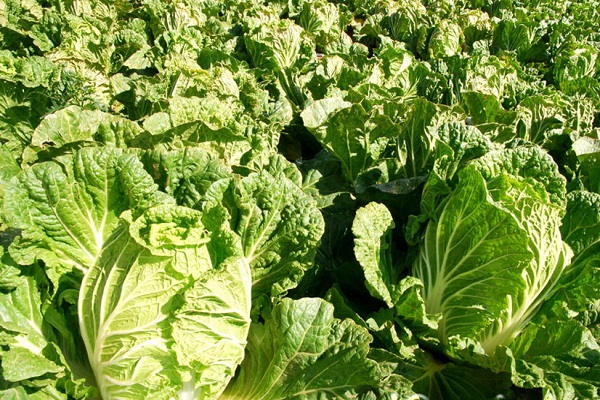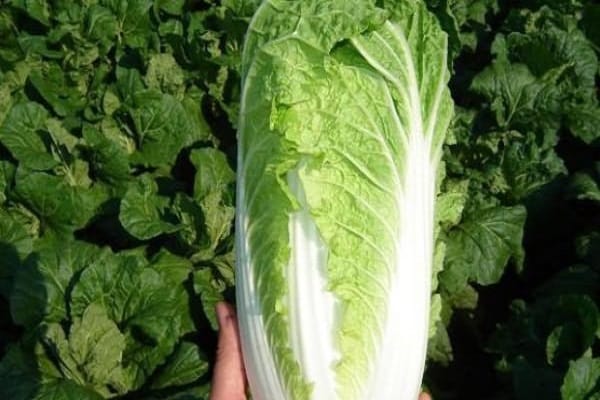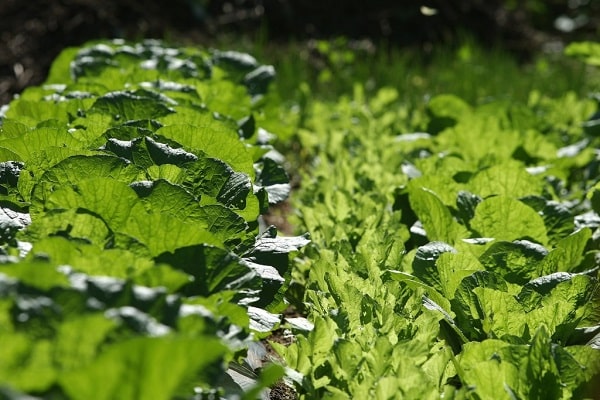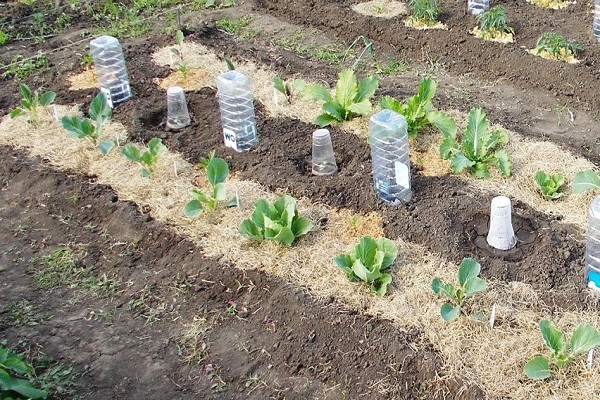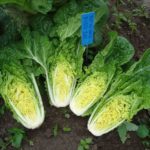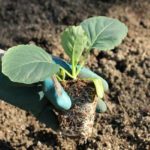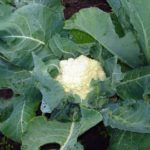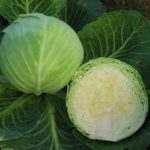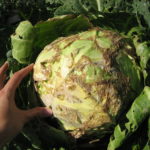The question of when to plant Chinese cabbage is not rhetorical even for an experienced gardener. It is not a fact that you will be able to grow it if you have good harvests of white cabbage. Without knowing the characteristics of the culture, instead of heads of cabbage, you can get spreading plants with a bunch of peduncles covered with yellow flowers.
Why planting dates are important
Chinese cabbage – the crop is cold-resistant; to form full-fledged heads of cabbage, it needs an air temperature of around 20 °C.High temperatures of 25 °C and above lead to the release of peduncles; in this case, a head of cabbage is not formed.
The formation of heads of cabbage is influenced by the length of daylight hours. Chinese cabbage prefers short days - no more than 12 hours; longer (13-14 hours) sunlight causes the plant to bloom and leads to crop loss.
In industrial greenhouses, automation regulates temperature and light, so they grow Chinese cabbage all year round. A summer resident in open ground conditions needs to proceed only from the weather conditions of his climatic zone. Therefore, the timing of planting Chinese cabbage in open ground is important to him.
For Chinese cabbage seeds to germinate, an average daily air temperature of around 5 °C is sufficient. Therefore, cabbage can be planted in open ground early in the spring. Heads of cabbage can form at a fairly low temperature of 15 °C.
In our climate, Chinese cabbage grows well in the fall. In temperate climates, it can be re-sown in the summer. It is impossible to announce common sowing dates for all summer residents - in our country there is too much difference in weather conditions.
When to sow Chinese cabbage for seedlings
We figured out that even in the absence of a greenhouse, any summer resident can get 2 harvests of Chinese cabbage. For summer consumption, cabbage is preferably grown as seedlings. When buying seeds, you need to pay attention to the ripening period of the variety or hybrid. This characteristic is important to know when determining the date for sowing seeds for seedlings.
Cabbage seedlings are ready for transplanting into the ground at the age of 30 days; by this time they should have 4 to 5 good leaves. In the middle zone, they begin to sow seeds to obtain their own seedlings in early April.For Siberian regions, these dates can be shifted two weeks ahead, and for summer residents in the south, this can be done 3 weeks earlier.
It is important to remember that Chinese cabbage bolts during sharp temperature fluctuations, therefore, when determining the timing, proceed from the average temperature conditions of your region. For the first experience, it is better to purchase a Dutch hybrid with an early ripening period. Hybrids shoot less, and the early ripening period guarantees the formation of heads of cabbage before the onset of hot weather.
How to grow seedlings at home correctly
Chinese cabbage does not like picking; this must be taken into account when growing seedlings. The mistake of many summer residents is that, by analogy with cabbage cabbage, sow seeds in a common box. Plant the seeds in peat cups and you will get successful seedlings.
To guarantee, we sow not one, but three seeds in one glass. Once the seedlings begin to grow, it is easy to identify the strongest plant and remove the rest by pinching the stem at ground level.
It is convenient to grow seedlings in peat cups; they make it easier to transplant seedlings into the ground. There is no need to remove the cabbage from the cups; they will gradually soak in the soil and will not interfere with the development of the root system. The roots are not damaged during transplantation.
To plant Chinese cabbage seedlings, you need to prepare a loose, fertile mixture and fill the cups with it. You can prepare the substrate for planting yourself. Here are two tested ratios:
- take 2 parts of coconut substrate and 1 part of mature humus;
- take 1 part lowland peat and 1 part turf soil.
Sprinkle the seeds with the mixture in a 2 cm layer. Place the containers for germination in a warm, dark place.They are transferred to the light only after germination. They appear quickly, only a few days pass from the moment of planting.
The room where the seedlings will grow must be cool. If you keep it at room temperature (25 °C), it will be weak, thin, and not suitable for growing in open ground. Seedlings are grown on a loggia or in an unheated room at a temperature not exceeding 8 °C. Summer residents who often visit their dachas should grow seedlings in a greenhouse or hothouse.
Caring for seedlings comes down to watering. Water for irrigation is taken warm. Watering should be moderate. If overwatered, it may suffer from blackleg. It is necessary to ensure a sufficient level of lighting during the day. After 7 p.m., seedlings can be shaded to provide them with short daylight hours.
Transplanting seedlings into open ground
The glasses are taken out to the balcony or outside for hardening. Begin approximately 14 days before transplantation. The soil on the ridges should warm up well. The place is chosen with the condition that from morning until lunch it is illuminated by the sun, in the afternoon there is partial shade.
Cucumbers, carrots, and onions are considered good predecessors. If possible, do not make a bed after beets and tomatoes. When digging, the soil is fertilized with humus and ash. The finished ridge should stand for a couple of days, after which holes are made on it. Recommended planting pattern:
- between two rows 50 cm;
- between the centers of the holes in the line is 35-40 cm.
The distance between two plants should be sufficient; seedlings planted closely are more likely to get sick, set heads worse, and are more susceptible to flowering.
It is good to water the holes the day before or two days before transplanting.Without removing them from the planting cups, place the seedlings in holes in the center of the holes and water them with warm water. In spring, night frosts are possible; many summer residents prefer to install plastic arches with covering material over seedlings planted in spring.
You don't have to remove the arches even in June. They have great benefits:
- protect from frost;
- prevent overheating;
- serve as an obstacle to cruciferous flea beetles and other pests;
- material that does not transmit light can be placed over the arches to reduce the duration of daylight hours.
After transplanting, the seedlings can be protected from direct sunlight for a couple of days; in the dark, they will quickly adapt to open ground.
Timing of summer sowing and its features
For winter consumption, Chinese cabbage can be planted during the summer. Planting dates remain relevant. In addition, the correct choice of variety is important. Summer planting of Chinese cabbage in open ground should be done with seeds, observing crop rotation.
You can plant the seeds in holes as seedlings or in furrows. The holes are placed at a distance of 35 cm from each other, 3 to 5 seeds are placed in each, sprinkled with earth, and dusted with ash. When the sprouts grow, the strongest one is left, the others are plucked out.
They are often planted in the furrows, maintaining an interval of 10 cm. After the appearance of 2 leaves on the plants, the first thinning is carried out. The procedure is repeated as the cabbage grows. As a result, the distance between two seedlings should be 35-40 cm.
Variety selection and planting dates
In those regions where night frosts occur as early as September, cabbage is planted on the 15th of July. Due to early autumn, late varieties will not have time to form heads suitable for storage.You need to choose mid-ripening varieties; they last a little longer than early-ripening ones.
For lovers of kimchi, a spicy Korean snack, the weather should not be an obstacle. They can leave room for cabbage in the greenhouse. Autumn planting in protected ground will not depend on the weather. By October, even in Siberia, heads of cabbage will form on any variety of cabbage, be it mid-season or late-ripening.
Late-ripening varieties are suitable for cellar storage. At temperatures close to 0 °C, the heads of cabbage retain their beneficial properties and presentation for 3 months. Late varieties are suitable for pickling. In regions where autumn is long and mild, late-ripening cabbage is successfully grown in open ground.
In mild climates, cabbage can be sown a second time from late July to early August. Preference is given to hybrids, as with spring planting. The correct choice of variety and adherence to planting dates reduce the likelihood of bolting.
Reasons for shooting
Once again about errors leading to premature formation of peduncles:
- The first reason and the most common is incorrect planting dates. If you doubt your abilities, then sow an early ripening variety for the first time. He definitely won’t have time to form an arrow.
- The second mistake is planting cabbage densely and ignoring thinning work. When planted densely, the plant does not receive enough of the necessary nutrients to form a head of cabbage.
- When transplanting seedlings into cold soil, the summer resident makes the third mistake. The stress from transplanting lasts longer than usual, the cabbage stops growing and therefore the head does not form.
- The established hot weather can destroy the harvest. When the air temperature is above 22 °C, the cabbage bed should be protected from the sun in the middle of the day.
- A delay in harvesting heads of cabbage also causes bolting and a decrease in the quality of the crop.
Conclusion
Decide whether it is possible to plant Chinese cabbage in your climate. It doesn’t matter if you didn’t have time to sow it in the spring. The whole summer is ahead, plant it in July, then autumn will delight you with a notable harvest. Considering the enormous benefits of this vegetable for our health, it will be time well spent.

